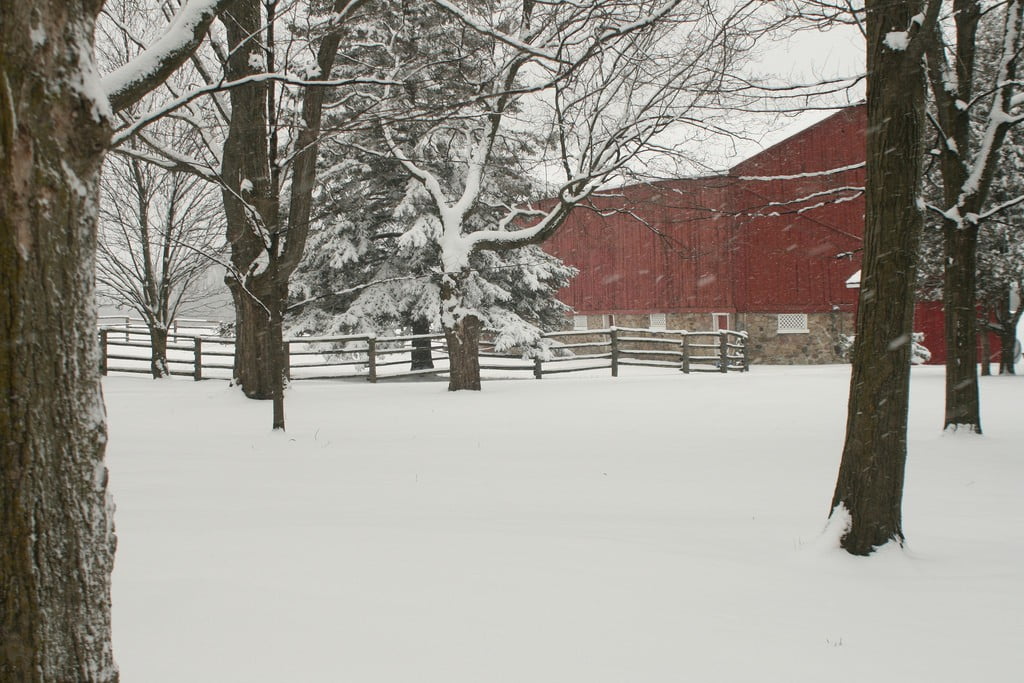Snow load is the downward force on a building’s roof by the weight of accumulated snow and ice. Your barn roof or the entire structure can fail if the accumulated snow load exceeds the weight the building was designed to shoulder. It doesn’t take a blizzard to cause problems; an imbalance of drifting snow can cause one part of a roof to give, causing a domino effect that affects the rest of the structure.
“Wood structures typically will give a warning of imminent failure with audible creaking or visible bowing of rafters,” says Randy Tinker, P.E., Risk Management Property Engineer with Nationwide Agribusiness. “Metal structures, unfortunately, often don’t exhibit signs of stress before failure.” Farmers need to keep a close watch on structures with heavy loads and be prepared to move livestock and equipment to safer quarters.
[hr_invisible]
What Can You Do?
- Use caution if standing on the roof, making sure to wear a safety harness and use securing ladders.
- Use a snow rake, and avoid chipping or picking away at ice as that may damage the roof.
- Remove snow in narrow strips to keep the load somewhat even.
- Not all snow needs to be removed. A thin layer of snow can protect the roof from damage while snow is being removed.
[hr_invisible]
Property Insurance Checklist
A few minutes can give you reassurance during a heavy-snow winter. Check with your TCI Insurance agent to:
- Confirm that your property insurance covers roof or building failure due to snow load.
- Make sure the policy pays for actual replacement costs, so you’re not out in the cold if you have to rebuild.
- Verify that valuable equipment stored in a barn or outbuilding is covered under your farm personal property endorsement.
Source: Nationwide Agribusiness
[hr]
How Much Snow is Too Much?
The University of Wisconsin Cooperative Extension Service says that a ballpark estimate of snow load can be made with the following formula:
Calculated Roof Loading (lb/ft2) = Depth (ft) x Density (lb/ft2 /ft depth)
The approximate density (lb/ft2 /ft depth) for light snow is 5-20, packed snow 20-40, packed snow with ice 40-58, and ice 58.
For example, a roof with 3 feet of light snow has an estimated roof load of 60 pounds per square foot (3 ft depth X 20 lb/ft2/ft depth density = 60 lb/ft2).

